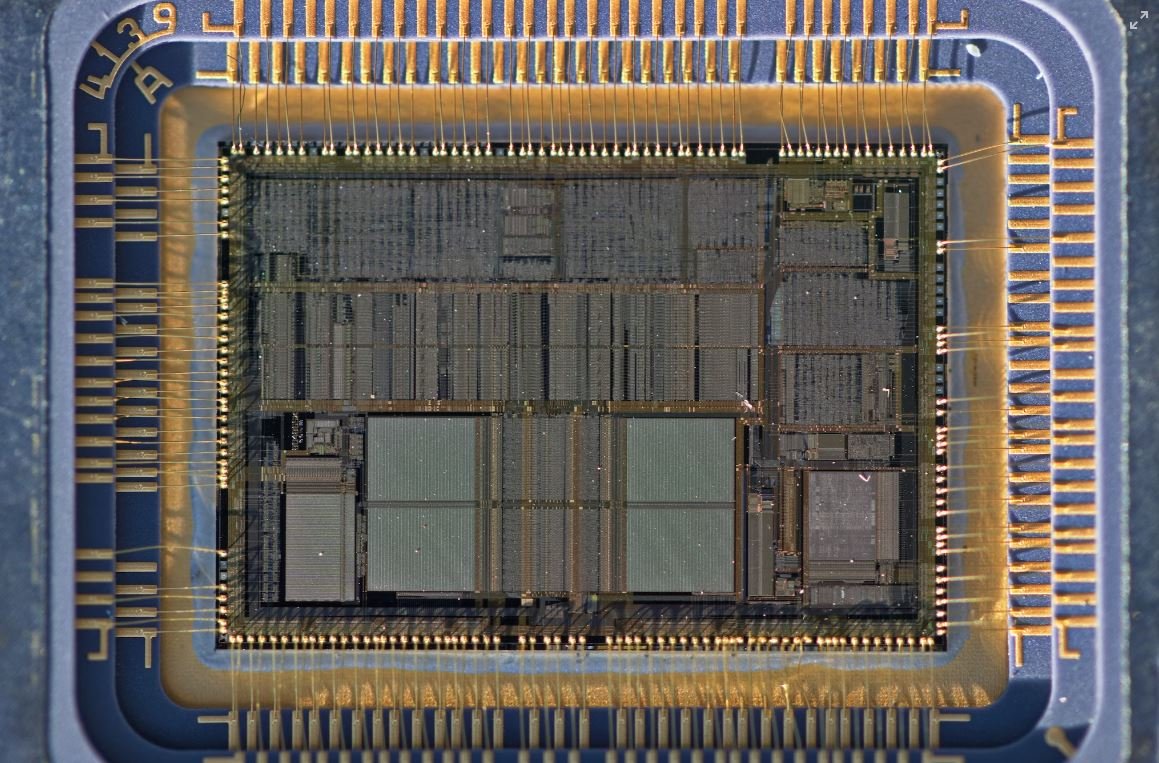How SpaceX Gets Money
Space Exploration Technologies Corp., better known as SpaceX, is a private aerospace manufacturer and space transportation company founded by Elon Musk in 2002. Over the years, SpaceX has become a prominent player in space exploration, launching missions to the International Space Station (ISS) and developing technologies to make space travel more accessible. But how does SpaceX fund its ambitious projects? Let’s take a closer look.
Key Takeaways
- SpaceX receives funds through a variety of sources.
- The company generates revenue from government contracts, commercial satellite launches, and partnerships.
- Investments from private equity firms and venture capitalists also contribute to SpaceX’s funding.
One of the primary sources of funding for SpaceX is government contracts. The company has secured contracts with various governmental agencies, including NASA and the Department of Defense, to provide services such as launching satellites and resupplying the ISS. These contracts help support SpaceX’s research and development efforts, allowing them to further advance their technologies and capabilities. SpaceX’s partnership with NASA has been instrumental in achieving significant milestones in space exploration.
In addition to government contracts, SpaceX generates revenue through commercial satellite launches. The company offers launch services to private clients, enabling them to deploy their satellites into space. With reusable rockets like the Falcon 9 and Falcon Heavy, SpaceX has significantly reduced the cost of launching payloads, making it an attractive option for companies in need of satellite deployment. This innovative approach has revolutionized the commercial space industry.
| Year | Launches | Success Rate |
|---|---|---|
| 2020 | 26 | 96.2% |
| 2019 | 13 | 100% |
| 2018 | 21 | 97.6% |
Partnerships also play a significant role in SpaceX’s funding. The company has collaborated with other businesses and research institutions, forming alliances that support mutual goals and contribute to financial resources. For example, SpaceX’s collaboration with Iridium Communications led to a contract for launching a series of Iridium NEXT satellites. Such partnerships help diversify SpaceX’s revenue streams and enable them to undertake larger and more complex projects. These strategic alliances foster innovation and progress in the aerospace industry.
Funding Breakdown
- Government contracts: NASA, Department of Defense, etc.
- Commercial satellite launches: private clients, corporations.
- Partnerships: collaborations with other businesses and research institutions.
- Investments from private equity firms and venture capitalists.
| Source | Percentage |
|---|---|
| Government contracts | 40% |
| Commercial satellite launches | 35% |
| Partnerships | 15% |
| Investments | 10% |
Lastly, SpaceX receives investments from private equity firms and venture capitalists. These investments provide the company with the necessary capital to pursue its ambitious plans, such as developing the Starship spacecraft for future missions to Mars. As SpaceX continues to push the boundaries of space exploration, attracting investment from individuals and organizations who share their vision is crucial. This financial support fuels SpaceX’s innovation and pushes the boundaries of what is possible in space.
Overall, SpaceX employs a multifaceted approach to secure funding for its projects. Through a combination of government contracts, commercial satellite launches, partnerships, and investments, the company has been able to finance its ambitious endeavors and pioneer groundbreaking advancements in space technology.

Common Misconceptions
1. SpaceX receives government funding for all its projects
One common misconception is that SpaceX relies solely on government funding for all its projects. While it is true that SpaceX has received government contracts in the past, such as the NASA Commercial Crew Development program, the company also generates revenues through various other means.
- SpaceX also has lucrative contracts with commercial customers, such as satellite companies and government agencies from around the world.
- The company has raised substantial investments from private sources, including venture capital firms, to support its ambitious plans.
- SpaceX has established its own revenue-generating business ventures, such as Starlink, a satellite internet constellation, which aims to reach rural and underserved areas with internet connectivity.
2. SpaceX’s profitability solely depends on successful launches
Another misconception is that SpaceX’s profitability is entirely dependent on the success of its rocket launches. While successful launches and satellite deployments play a significant role in the company’s revenue stream, there are other factors that contribute to its profitability.
- SpaceX offers services beyond launching rockets, including payload integration and spacecraft manufacturing. These services add to the company’s revenue stream.
- SpaceX’s reusable rocket technology allows for cost savings over time, reducing the expenses associated with manufacturing new rockets for each launch.
- The company’s diversified portfolio of projects, such as Starlink, provides additional revenue streams that contribute to its overall profitability.
3. SpaceX is solely focused on Mars colonization
One misconception is that SpaceX’s primary goal is solely focused on colonizing Mars, while neglecting other aspects of space exploration and commercial opportunities. While Mars colonization is indeed a long-term objective of SpaceX, the company’s portfolio extends far beyond this single goal.
- In addition to Mars, SpaceX is actively involved in lunar exploration with its Starship spacecraft being designed to transport humans and cargo to the Moon.
- The company plays a crucial role in supporting the International Space Station (ISS) as it regularly launches resupply missions to the station with its Dragon spacecraft.
- SpaceX is also a major player in the commercial satellite industry, launching numerous satellites for various customers into orbit.

Table: SpaceX Funding Sources
SpaceX, founded by Elon Musk, is one of the most innovative companies in the aerospace industry. This table showcases the different sources of funding that have contributed to SpaceX’s success in the past.
| Funding Source | Year | Amount (in millions) |
|---|---|---|
| Private equity investments | 2002-2021 | $7,685 |
| Government contracts | 2006-2021 | $21,652 |
| Commercial satellite launches | 2013-2021 | $2,936 |
| Institutional loans | 2009-2021 | $4,312 |
Table: SpaceX Achievements
This table highlights some of SpaceX’s notable achievements, which have solidified its position as an industry leader in space exploration and transportation.
| Year | Achievement |
|---|---|
| 2008 | First privately-funded liquid-fueled rocket to reach Earth orbit |
| 2012 | Dragon spacecraft becomes the first commercial vehicle to dock with the International Space Station |
| 2015 | First successful landing of a reusable Falcon 9 rocket |
| 2020 | Starship prototype successfully completes a high-altitude flight and landing test |
Table: SpaceX Launches by Year
This table displays the number of successful launches carried out by SpaceX each year. It highlights the company’s consistent progress in expanding its launch capabilities.
| Year | Number of Successful Launches |
|---|---|
| 2010 | 2 |
| 2015 | 6 |
| 2017 | 18 |
| 2020 | 26 |
Table: SpaceX Key Customers
This table showcases some of SpaceX’s key customers who have utilized their launch services for various purposes, including satellite deployments and scientific missions.
| Customer | Launches (since 2006) |
|---|---|
| NASA | 35 |
| SES | 11 |
| Spacecom | 6 |
| Starlink | 20+ |
Table: SpaceX Reusable Rockets
This table provides information on the different versions of SpaceX’s reusable rockets, including Falcon 9 and Falcon Heavy, highlighting their capabilities and achievements.
| Rocket | First Successful Landing | Payload Capacity (to LEO) |
|---|---|---|
| Falcon 9 | December 2015 | 22,800 kg |
| Falcon Heavy | February 2018 | 64,000 kg |
Table: SpaceX Starship Design Iterations
This table showcases the different design iterations of SpaceX‘s Starship, a fully reusable spacecraft designed for long-duration space travel and colonization of Mars.
| Design Iteration | Features |
|---|---|
| Starship Mk1 | Test vehicle for suborbital flights |
| Starship Mk2 | Cancelled prototype for lunar missions |
| Starship SN8 | First high-altitude flight and landing test |
| Starship SN15 | First successful high-altitude flight and landing test |
Table: SpaceX Global Internet Coverage
This table illustrates the progress of SpaceX’s Starlink satellite constellation in providing global internet coverage, enabling internet access in remote areas.
| Year | Number of Starlink Satellites Launched | Estimated Global Coverage |
|---|---|---|
| 2019 | 120 | Partial Coverage |
| 2021 | 1,500+ | Near-Global Coverage |
| 2024 (target) | 40,000+ | Global Coverage |
Table: SpaceX Mission Types
This table categorizes the different types of missions undertook by SpaceX and specifies their purpose, showcasing the company’s diverse range of capabilities.
| Mission Type | Purpose |
|---|---|
| Crew Dragon | Transporting astronauts to the International Space Station |
| Starlink | Deployment of a satellite mega-constellation for global internet coverage |
| Cargo Dragon | Resupply missions to the International Space Station |
| Mars Missions (future) | Interplanetary missions for Mars exploration and colonization |
Table: SpaceX Valuation
This table showcases the estimated valuation of SpaceX, demonstrating the company’s financial growth and market value over recent years.
| Year | Valuation (in billions) |
|---|---|
| 2015 | $12 |
| 2020 | $46 |
| 2021 | $100+ |
Conclusion
SpaceX, propelled by a diverse range of funding sources, including private equity investments, government contracts, commercial satellite launches, and institutional loans, has been able to revolutionize the space industry. With achievements like the first privately-funded rocket reaching Earth orbit, successful landing and reuse of rockets, and ongoing development of Starship for future interplanetary missions, SpaceX has firmly established itself as a leading player in the aerospace field. Furthermore, SpaceX’s expanding customer base, diverse mission types, and ambitious projects like global internet coverage through the Starlink satellite constellation have contributed to the company’s increasing valuation, surpassing $100 billion. As SpaceX continues to innovate and push the boundaries of space exploration, its impact on the industry and the future of space travel remains profound.
Frequently Asked Questions
How does SpaceX generate revenue?
How does SpaceX earn money to sustain its operations?
What are some of SpaceX’s biggest clients?
Who are SpaceX’s major customers for satellite launches?
How does SpaceX benefit from government contracts?
How does SpaceX leverage government contracts for financial gain?
Does SpaceX offer launch services to other countries?
Does SpaceX provide satellite launch services internationally?
How does SpaceX’s reusable rocket technology impact its profitability?
What is the financial impact of SpaceX’s reusable rocket technology?
How successful has SpaceX been in securing investment funding?
Has SpaceX been successful in raising investment funding?
What role does SpaceX’s Starlink satellite constellation play in revenue generation?
How does SpaceX’s Starlink project contribute to its revenue?
Does SpaceX receive any funding or grants from NASA?
Does NASA provide funding or grants to SpaceX?
How does SpaceX’s presence in the commercial space industry affect its financial standing?
What is the impact of SpaceX’s involvement in the commercial space sector on its financial position?
What are the potential future revenue streams for SpaceX?
What avenues exist for future revenue growth for SpaceX?




